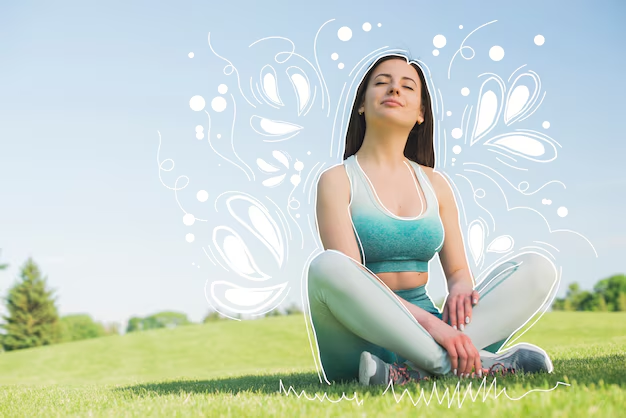Table of Contents

Introduction
In today’s fast-paced world, achieving a balance between work, personal life, and self-care can be a daunting challenge. With rising stress levels, mental fatigue, and physical exhaustion becoming the norm, it’s no surprise that many seek ways to find inner peace and holistic wellness. The key to achieving this balance lies in mindfulness and wellness practices—powerful techniques that can transform your life and enhance your overall well-being.
Mindfulness involves being fully present in the moment, aware of where we are and what we are doing, without being overly reactive or overwhelmed by what’s happening around us.
It encourages us to experience our thoughts and feelings without judgment, allowing for a deeper understanding of ourselves. Wellness practices, on the other hand, encompass a broad range of activities that support physical, mental, and emotional health.
This holistic approach recognizes that our well-being is interconnected and that nurturing one aspect can lead to improvements in others. By incorporating these techniques into daily life, you can cultivate inner peace, improve emotional resilience, and develop a healthier and happier outlook.
This comprehensive guide explores 10 powerful mindfulness and wellness techniques that can help you transform your life. From meditation and breathwork to mindful eating and sleep hygiene, each of these practices is backed by science and proven to enhance well-being. Whether you are a beginner or looking to deepen your understanding, these techniques will serve as a roadmap to a more balanced and fulfilling life.
Meditation: Cultivating Inner Peace
Meditation is one of the most well-known mindfulness practices, with roots in ancient traditions such as Buddhism and Hinduism. It involves training the mind to focus and redirect thoughts, helping to cultivate awareness, inner peace, and emotional clarity. As we navigate the complexities of modern life, the ability to pause and center ourselves through meditation becomes an invaluable tool.
Benefits of Meditation:
- Reduces stress and anxiety: Regular meditation practice has been shown to lower levels of the stress hormone cortisol, allowing individuals to navigate life’s challenges with greater ease.
- Enhances self-awareness: By fostering a deeper connection with our thoughts and feelings, meditation helps us to understand ourselves better and make conscious choices rather than react impulsively.
- Improves concentration and memory: Studies have demonstrated that engaging in meditation can increase cognitive function, enhancing our ability to focus and retain information.
- Supports emotional well-being: Meditation promotes emotional regulation, helping us to respond to challenging situations more calmly and thoughtfully.
- Promotes better sleep: Practicing meditation can prepare the mind for restful sleep by calming racing thoughts and inducing relaxation.
Types of Meditation:
- Mindfulness Meditation: This practice involves observing thoughts without judgment, encouraging a non-reactive awareness that can lead to profound insights.
- Loving-Kindness Meditation: By cultivating compassion and positivity towards ourselves and others, this type of meditation fosters deep emotional connections and empathy.
- Transcendental Meditation: Utilizing mantras to achieve deep relaxation, this technique allows the mind to settle into a state of profound peace.
- Guided Meditation: Following a recorded instructor can ease stress and enhance focus, making it accessible for beginners.
How to Get Started:
- Find a quiet space free from distractions.
- Choose a comfortable posture (sitting or lying down).
- Focus on your breath and gently bring your mind back when it wanders.
- Start with 5 minutes daily and gradually increase the duration as you become more comfortable with the practice.

Breathwork: Harnessing the Power of Your Breath
Breathwork is a practice that involves controlled breathing techniques to improve mental, emotional, and physical health. Breathing deeply and intentionally can help regulate stress responses, lower anxiety, and enhance overall well-being. The breath serves as a powerful tool for grounding ourselves and connecting with our bodies, making breathwork an essential component of mindfulness.
Popular Breathwork Techniques:
- Box Breathing: Inhale for 4 seconds, hold for 4 seconds, exhale for 4 seconds, and hold for 4 seconds. This technique helps to calm the nervous system and promote clarity.
- 4-7-8 Breathing: Inhale for 4 seconds, hold for 7 seconds, and exhale for 8 seconds. This method encourages relaxation and can help alleviate insomnia.
- Alternate Nostril Breathing: This technique balances energy and calms the nervous system, promoting a sense of peace and tranquility.
Benefits:
- Reduces cortisol levels (stress hormone): Breathwork can lower stress responses in the body, leading to a greater sense of calm.
- Increases oxygen supply to the brain: Enhanced oxygen flow can improve cognitive function and energy levels.
- Improves focus and emotional regulation: By practicing breathwork regularly, individuals can gain better control over their emotions and maintain focus in challenging situations.
Yoga: The Mind-Body Connection
Yoga is a holistic practice that integrates physical movement, breath control, and meditation to promote mental and physical well-being. The dynamic interplay between body and mind in yoga allows for a deeper understanding of oneself and fosters a sense of connection to the world around us.
Types of Yoga:
- Hatha Yoga: Gentle and slow-paced, ideal for beginners seeking to develop strength and flexibility.
- Vinyasa Yoga: Flowing sequences that link breath with movement, providing a dynamic and invigorating experience.
- Yin Yoga: Focuses on deep tissue release and relaxation, allowing for a meditative state through longer-held poses.
- Power Yoga: Strength-building and high-intensity, catering to those looking for a vigorous workout.
How Yoga Benefits Wellness:
- Enhances flexibility and strength, making daily activities easier and reducing the risk of injury.
- Improves mental clarity and focus, promoting greater productivity in both personal and professional life.
- Supports emotional balance and stress relief through mindful movement and breath awareness.


Journaling: The Power of Reflection and Gratitude
Journaling is a mindful practice that allows self-reflection, emotional processing, and personal growth. Writing down thoughts and feelings helps clear the mind and provides valuable insights into patterns and emotions. Through this process, individuals can gain clarity, set intentions, and foster a deeper understanding of their experiences.
Types of Journaling:
- Gratitude Journaling: Writing down three things you are grateful for each day can shift your focus toward positivity and enhance overall well-being.
- Free Writing: Allows for unstructured, spontaneous thoughts to flow onto the page, providing an outlet for emotions and creativity.
- Goal Setting: Tracking progress toward personal goals can motivate and provide direction, helping to turn dreams into actionable plans.
How to Begin:
- Dedicate 5-10 minutes daily to journaling, making it a consistent part of your routine.
- Choose prompts such as “What made me smile today?” or “What challenges did I overcome this week?”
- Reflect on emotions, achievements, and aspirations to foster personal growth and insight.
- Digital Detox: Unplugging for Mental Clarity
Constant exposure to screens and digital devices can lead to mental exhaustion, decreased productivity, and disturbed sleep patterns. A digital detox helps restore balance by reducing dependency on technology. In a world where we are constantly bombarded by information, taking time to unplug can rejuvenate our minds and enhance our overall well-being.
Tips for a Digital Detox:
- Set designated “no-screen” hours before bed to improve sleep quality and foster relaxation.
- Limit social media usage to specific times of the day, reducing feelings of overwhelm and anxiety.
- Engage in offline activities such as reading, painting, or outdoor walks to reconnect with the physical world.
Mindful Eating: Nourishing Your Body and Mind
Mindful eating involves paying attention to food choices, savoring flavors, and being fully present during meals. This practice encourages a healthy relationship with food and promotes awareness of our body’s needs, leading to improved digestion and satisfaction.
How to Practice Mindful Eating:
- Eat without distractions (no TV or phone) to fully engage with the experience of eating.
- Chew slowly and savor each bite, allowing time for your body to signal when you are full.
- Listen to your body’s hunger and fullness cues, fostering a deeper connection to your physical needs.
Nature Therapy: Healing Through the Outdoors
Spending time in nature reduces stress, boosts creativity, and enhances mood. Activities such as hiking, gardening, and forest bathing (shinrin-yoku) provide grounding and relaxation. Connecting with the natural world can have profound effects on our mental and emotional health, reminding us of the beauty and tranquility that surrounds us.
- Sleep Hygiene: Restoring Your Mind and Body
Good sleep hygiene promotes restorative rest, improving both mental and physical health. Prioritizing quality sleep is essential for overall wellness, as it allows the body to recover and rejuvenate.
Tips for Better Sleep:
- Maintain a consistent sleep schedule, going to bed and waking up at the same time each day.
- Avoid screens an hour before bedtime to reduce stimulation and promote relaxation.
- Create a calming nighttime routine involving activities such as meditation, reading, or gentle stretching.
Practicing Gratitude: Shifting Your Perspective
Expressing gratitude rewires the brain for positivity and enhances emotional well-being. Keeping a gratitude journal, writing thank-you notes, or simply acknowledging daily blessings can significantly improve happiness levels. By focusing on what we appreciate, we cultivate a mindset that welcomes positivity, even in challenging times.
Social Connection: Strengthening Relationships for Wellness
Strong social bonds contribute to emotional stability and longevity. Prioritizing quality relationships, engaging in meaningful conversations, and practicing empathy fosters a sense of belonging and support. Building a network of supportive friends and family can enhance resilience and provide comfort during difficult times.


Conclusion
Mindfulness and wellness practices are not just trends; they are scientifically backed strategies that can profoundly impact overall well-being. By incorporating meditation, breathwork, yoga, journaling, digital detox, mindful eating, nature therapy, sleep hygiene, gratitude, and social connections into daily life, you can cultivate a more balanced, fulfilling, and joyful existence.
The journey towards mindfulness begins with small steps. Start by incorporating one or two of these practices into your daily routine and gradually build upon them. Remember, the key to transformation lies in consistency and intention. Embrace these techniques and watch as they bring harmony, clarity, and vitality into your life, guiding you towards a state of holistic wellness that nourishes both body and mind.